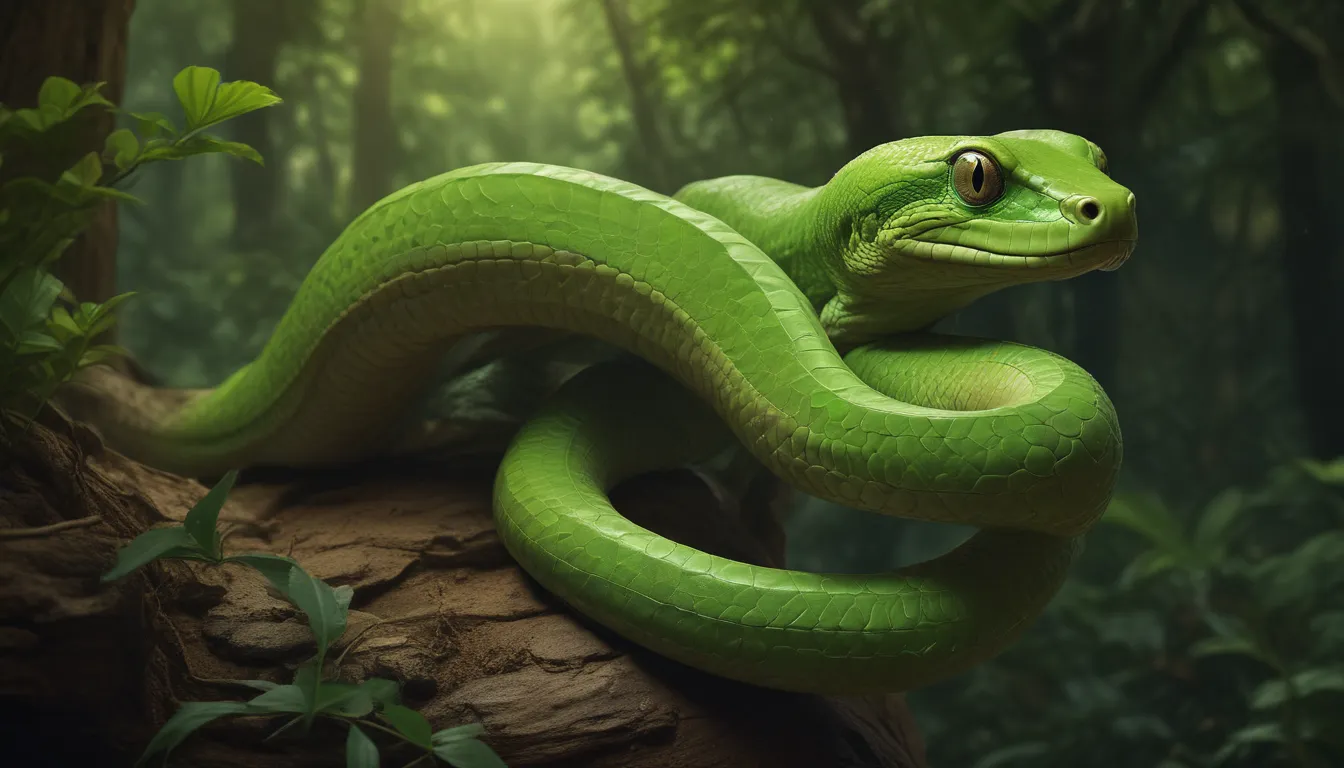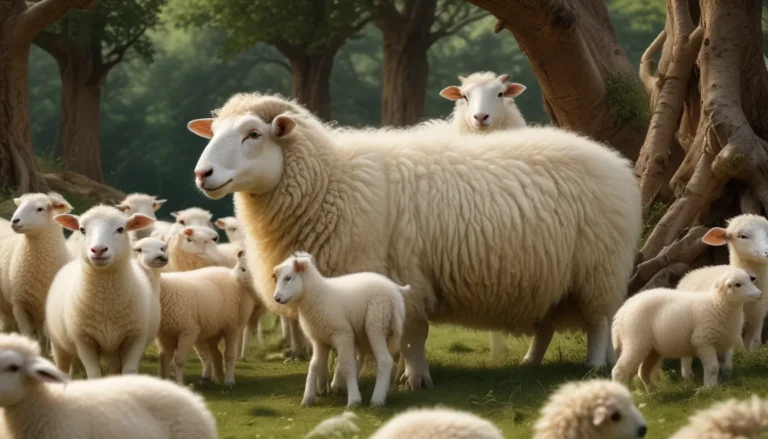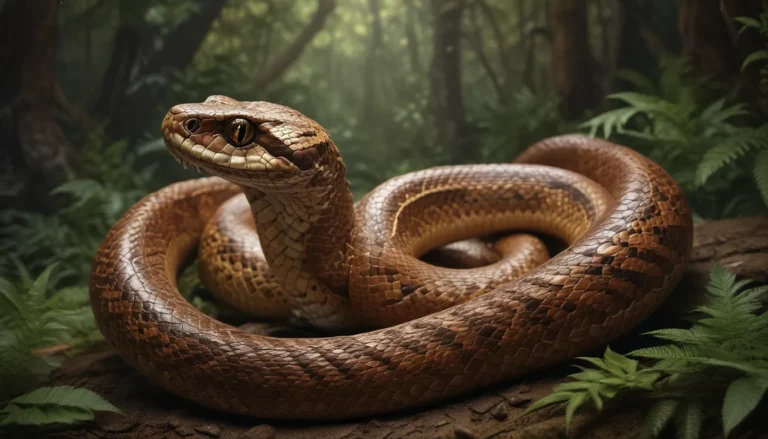The pictures we use in our articles might not show exactly what the words say. We choose these pictures to make you interested in reading more. The pictures work together with the words but don’t take their place. The words still tell you the important facts.
Welcome to the captivating world of the Green Mamba, a deadly and vibrant snake native to the forests of sub-Saharan Africa. Known for its striking green coloration, lightning-fast speed, and advanced hunting skills, the Green Mamba is a creature that has both intrigued and instilled fear in many. In this article, we will delve into 15 surprising facts about the Green Mamba, shedding light on its unique characteristics and behavior. From its impressive length and speed to its hunting tactics and defensive mechanisms, there is much to uncover about this remarkable reptile. Join us on this journey as we explore the intriguing world of the Green Mamba!
The Deadly Majesty of the Green Mamba
The Green Mamba, scientifically known as Dendroaspis angusticeps, holds the title of being one of the deadliest snakes in the world. With its potent venom and aggressive nature, this striking snake roams the forests and savannas of sub-Saharan Africa, responsible for numerous human fatalities. Understanding the Green Mamba's role in its ecosystem requires acknowledging its deadly reputation and the need for caution when encountering this formidable serpent.
The Significance of Vibrant Green Coloration
The striking green color of the Green Mamba serves as a warning to potential predators. This vibrant hue acts as a visual cue, signaling the snake's venomous nature and deterring predators from attacking. Additionally, the green coloration aids in camouflage, allowing the Green Mamba to blend seamlessly into its natural habitat and enhancing its effectiveness as a predator.
Speed and Agility: The Green Mamba’s Lethal Combination
Renowned for its exceptional speed and agility, the Green Mamba is a force to be reckoned with in the animal kingdom. Capable of reaching speeds of up to 12 miles per hour, this snake navigates swiftly through trees and on the ground, making it a formidable predator. Its lightning-fast movements enable it to capture prey with ease, showcasing its prowess in the wild.
Diurnal Hunting Habits of the Green Mamba
Unlike many nocturnal snakes, Green Mambas are diurnal hunters, actively seeking prey during the day. Leveraging their excellent eyesight, they target small mammals, birds, and reptiles as their primary sources of food. This unique hunting behavior sets them apart from other venomous snakes and showcases their adaptability in the wild.
Advanced Venom Delivery System
Equipped with a pair of elongated, hollow fangs in the front of its mouth, the Green Mamba possesses a highly advanced venom delivery system. With a single strike, it can inject a significant amount of venom into its prey, leading to rapid paralysis and ultimately death. This potent neurotoxic venom targets the nervous system, causing respiratory failure and posing a threat to its victims.
Solitary Nature and Oviparous Reproduction
Green Mambas are solitary creatures, establishing territories and defending them against intruders. During the mating season, they come together for reproduction, showcasing their social behavior in specific contexts. Female Green Mambas are oviparous, laying a clutch of eggs that they guard until hatching. This reproductive strategy highlights the complexity of their life cycle and parental care.
Lifespan and Climbing Skills of Green Mambas
The average lifespan of a Green Mamba ranges from 10 to 12 years in the wild, subject to environmental factors and predation. Equipped with powerful muscles and a prehensile tail, these snakes are skilled climbers, effortlessly navigating through dense vegetation. Their climbing abilities enable them to access a wide variety of prey, showcasing their adaptability and survival skills in their natural habitat.
Unique Hunting Techniques and Defensive Behavior
The Green Mamba employs an ambush hunting technique, remaining coiled and hidden before striking out at unsuspecting prey. This strategy allows it to conserve energy while maximizing its chances of a successful kill. When threatened, the Green Mamba displays aggressive behavior, characterized by rapid strikes, hissing, and potential biting. Understanding these hunting techniques and defensive mechanisms is crucial for safely encountering this species in the wild.
Conservation and Ecological Role of the Green Mamba
Despite its fearsome reputation, the Green Mamba plays a vital role in maintaining ecosystem balance. As an apex predator, it helps control populations of small mammals and other prey species, preventing overpopulation and contributing to ecological harmony. Understanding and respecting the importance of the Green Mamba in its environment is essential for conservation efforts and preserving biodiversity.
Unveiling the Enigmatic Green Mamba
In conclusion, the Green Mamba stands as a fascinating and enigmatic species that captures the imagination of scientists and animal enthusiasts alike. Its vibrant coloration, lightning-fast speed, and potent venom make it a truly remarkable snake in the animal kingdom. As we continue to explore the world of the Green Mamba, we uncover more secrets about its unique characteristics and behaviors, inviting us to appreciate the beauty and complexity of this magnificent reptile.
Frequently Asked Questions
- Are Green Mambas truly green?
-
Yes, Green Mambas exhibit a bright green coloration, serving as camouflage in their natural habitat.
-
How venomous is the Green Mamba?
-
The Green Mamba possesses a potent neurotoxic venom that can be fatal to humans, emphasizing the importance of immediate medical attention.
-
Where are Green Mambas found?
-
Green Mambas are native to sub-Saharan Africa, inhabiting forests and coastal regions of countries like South Africa, Mozambique, and Zimbabwe.
-
What is the speed of a Green Mamba?
-
Green Mambas can move at speeds of up to 12 miles per hour, showcasing their agility in capturing prey.
-
What is the diet of Green Mambas?
-
Green Mambas primarily feed on small birds and rodents, utilizing their hunting skills and speed to secure food.
-
Are Green Mambas aggressive towards humans?
-
While Green Mambas generally avoid confrontation with humans, they may display aggressive behavior when threatened.
-
Can Green Mambas be kept as pets?
-
Due to their high venom toxicity and specific care requirements, Green Mambas are not suitable as pets and require expert handling.
-
Do Green Mambas lay eggs?
- Yes, female Green Mambas are oviparous, laying eggs that they guard until hatching, showcasing their reproductive strategy.
Delve deeper into the captivating world of Green Mambas and uncover more astonishing facts about these incredible snakes. Explore the nuances of their behavior, adaptations, and ecological significance, inviting you to appreciate the beauty and complexity of nature's wonders. As we continue to learn and respect the Green Mamba, we gain a deeper understanding of its role in the delicate balance of the natural world. Join us on this journey of discovery and admiration for the enigmatic Green Mamba!






